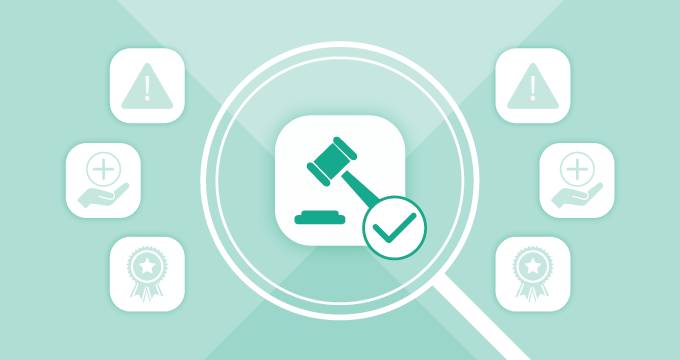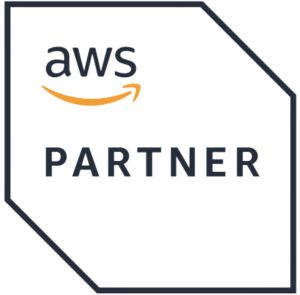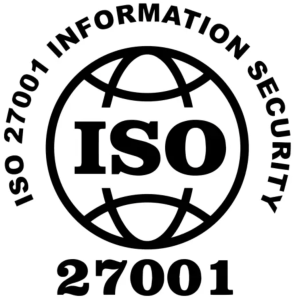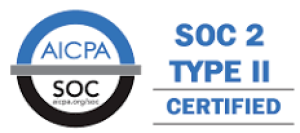A common mistake: you treat compliance as a box to tick.
In reality, compliance is a fundamental part of running a responsible, sustainable, and secure business.
Whether you’re handling sensitive customer data, managing employee records, or building a SaaS product for enterprise clients, your ability to meet regulatory standards can directly impact your bottom line.
But while most organizations and agencies understand why compliance matters, far fewer understand how much it actually costs, or what it really costs to get it wrong.
In this post, we:
- Break down the true compliance cost (+ cost of non-compliance)
- Examine the hidden financial impact of bad data management
- Help you stay aligned with major regulations in your industry
What Constitutes Compliance Cost?
The cost of compliance goes beyond legal consultations and audits. It includes investments in secure systems, employee training, documentation, and data governance.
Failing to comply can lead to devastating financial penalties, reputational damage, lost business, and, in severe cases, the end of your company.
Add to that the growing complexity of regulations like HIPAA, GDPR, and SOC 2, and it’s clear that organizations can no longer afford to treat compliance as an afterthought. All these frameworks require time, resources, and strategic planning, but they also protect your data assets, earn customer trust, and position your company for long-term growth.
Compliance costs refer to the total expenses a business incurs to meet regulatory and legal requirements. These costs can be direct or indirect, predictable or variable, and they often scale with the complexity of your operations.
Direct compliance costs
These are the most visible and measurable expenses tied to regulatory obligations. They include:
- Audits and certifications — External audits for standards like SOC 2, ISO 27001, or HIPAA can cost anywhere from $15,000 to over $100,000, depending on scope and business size.
- Legal and consulting fees — Companies often hire specialists to interpret new laws or guide implementation, especially for complex regulations like GDPR or CCPA.
- Security and compliance software — Different tools help automate compliance monitoring, reporting, and gap detection, but require ongoing subscription fees.
- Employee training — Ensuring staff are trained on data handling, privacy policies, and security protocols is essential, and often mandated.
- Documentation and reporting — Creating, managing, and maintaining policies, access logs, incident response plans, and audit trails.
Indirect compliance costs
These aren’t always reflected in a line-item budget, but they can still significantly impact your operations:
- Operational disruption — Rolling out new security measures or adjusting workflows to meet compliance requirements can slow down product development or service delivery.
- Increased hiring needs — Some regulations require hiring dedicated compliance officers, legal counsel, or IT security staff, especially in regulated sectors like healthcare and finance.
- Vendor due diligence — Companies must also ensure that their vendors and partners are compliant, which often means time-consuming due diligence and contract negotiations.
Average compliance spend by industry
- Financial services — According to a Thomson Reuters report, large financial institutions can spend more than $10,000 per employee per year on compliance.
- Healthcare — HIPAA compliance costs vary, but even small practices typically spend $10,000 to $50,000+ annually. For large healthcare providers, the compliance cost could exceed $250,000 annually.
- SaaS and tech companies — SOC 2 readiness and audits can cost $20,000 to $80,000+, not including prep time and tooling.
While these figures might seem steep, they pale in comparison to the financial and reputational damage of non-compliance.
The Cost of Non-Compliance
While compliance costs can be significant, the cost of non-compliance is almost always higher, and often far more damaging in the long run. When organizations fail to meet regulatory requirements, they face not just financial penalties but also lawsuits, operational disruption, and lasting reputational damage.
Regulatory fines and penalties
Major compliance frameworks carry serious consequences for violations. Here are a few well-documented examples:
- HIPAA — Violations can lead to fines of up to $1.5 million per year per violation category, and in cases of willful neglect, organizations can face civil and criminal charges.
- GDPR — The European data protection law allows fines of up to €20 million or 4% of global annual turnover, whichever is higher.
- CCPA/CPRA — California’s privacy laws carry penalties of no more than $2,663 per violation, and $7,988 per intentional violation, including those impacting minors.
- SOX & PCI DSS — These standards in the finance and payment industries can result in massive fines, not to mention liability in the case of data breaches.
In 2023, Meta was fined €1.2 billion under the GDPR for violating cross-border data transfer rules. Anthem Inc. paid over $16 million to resolve a HIPAA breach involving nearly 79 million people.
In the financial sector, JPMorgan Chase was fined $200 million in 2021 for failing to preserve employee communications on personal devices, violating recordkeeping rules.
The true compliance cost goes beyond fines
Besides fines, your organization might suffer the following in case of non-compliance:
- Reputation damage — Studies show that nearly 50% of companies experience significant brand and trust loss following a compliance failure. Customers and investors may view the company as careless or negligent.
- Legal and remediation costs — Businesses often face class-action lawsuits, legal fees, breach notifications, credit monitoring for affected users, and more.
- Lost business and delayed sales — Enterprise clients often require security certifications. A failed audit or non-compliance status can result in lost deals or stalled onboarding.
- Increased scrutiny — Once an organization is fined, it often becomes subject to ongoing regulatory oversight, which means more audits, higher compliance costs, and fewer second chances.
According to a study by Globalscape and the Ponemon Institute, the average cost of non-compliance is $14 million annually, more than 2.7 times higher than the average cost of maintaining compliance.
The Hidden Cost of Bad Data Asset Management
Even if your organization is investing in compliance, poor data asset management can quietly undermine those efforts and rack up costs in ways many businesses overlook.
What is data asset management?
Data asset management is the practice of organizing, classifying, storing, and governing your company’s data.
It’s essential for compliance because nearly every major regulation, such as GDPR, HIPAA, SOC 2, and CCPA, requires you to know:
- What data you collect
- Where it’s stored
- Who has access to it
- How it’s protected
- How long it’s retained
When data is scattered, outdated, or mismanaged, you increase the risk of non-compliance, even if you’ve invested in other parts of your compliance program.
The Business Impact of Poor Data Hygiene
- Failed audits — If you can’t prove where sensitive data lives or who accessed it, you’re likely to fail a security audit or regulatory review.
- Increased breach risk — Disorganized or unclassified data is harder to protect, making it a prime target for ransomware and other cyber threats.
- Wasted resources — Without a clear data inventory, companies often overspend on storage, duplicate tools, or unnecessary compliance coverage.
- Slow incident response — Poor data visibility makes it harder to detect and contain breaches, increasing remediation time and costs.
- Customer distrust — Losing or exposing personal data due to negligence can permanently damage customer relationships, even without a regulatory fine.
The dollar cost of bad data
According to an IBM study, bad data costs U.S. businesses $3.1 trillion annually. Much of this stems from inefficiencies, poor decision-making, and compliance risk. Gartner also reports that organizations lose an average of $12.9 million per year due to poor data quality.
For SaaS businesses in particular, messy data management can also:
- Delay SOC 2 or ISO 27001 certifications
- Complicate M&A due diligence
- Create uncertainty in data residency (especially critical for GDPR compliance)
7 Strategies to Help You Reduce Compliance Cost
Organizations often assume that compliance costs are fixed.
However, smart systems, modern processes, and intentional data management can significantly reduce long-term costs. Below are proven strategies for reducing compliance-related expenses without compromising on quality or security:
Centralize data archiving
Scattered data across email servers, cloud platforms, personal devices, and legacy systems creates chaos during audits or investigations. A centralized archive gives compliance teams instant access to communications and files in a single, searchable location.
- Consolidates retention policies across platforms.
- Reduces the time and labor needed for ediscovery.
- Improves defensibility during audits or litigation.
Example: Archiving all email, chat, iMessage, video conferencing, and social media data in one solution reduces document retrieval time by up to 70% during a legal hold.
Automate retention and deletion policies
Manual retention tracking is error-prone and expensive. Automating these processes ensures consistency and helps organizations avoid over-retention (which increases risk) or premature deletion (which can lead to fines).
- Apply rules based on data type, jurisdiction, and regulatory requirements.
- Expire or archive data automatically after a defined period.
- Reduce unnecessary storage costs while meeting legal obligations.
Example: Automating retention for inactive employee records can eliminate gigabytes of liability-ridden data with zero manual intervention.
Use AI and metadata tagging to streamline review
Data review is the single most expensive part of ediscovery and regulatory audits. AI-powered tools that tag, classify, and cluster data by topic or sensitivity can reduce the document volume that requires human review.
- Identify personally identifiable information (PII), financial data, or sensitive IP.
- De-duplicate redundant documents and emails.
- Prioritize high-risk or time-sensitive records for review.
Studies show that technology-assisted review can reduce document review costs by up to 40%.
Conduct routine compliance audits and data mapping
Ongoing compliance audits are cheaper than reactive cleanup. Regularly reviewing data flows, user permissions, and storage locations helps teams correct issues before they trigger fines.
- Create a live inventory of where regulated data resides.
- Detect shadow IT or unauthorized storage.
- Ensure retention, encryption, and access controls are in place.
Bonus: Having up-to-date data maps accelerates incident response in case of a breach.
Eliminate ROT Data (Redundant, Obsolete, Trivial)
Organizations waste significant resources storing and managing low-value or expired data. Performing regular ROT data cleanups lightens the regulatory burden and improves search and retrieval performance.
- Archive only what’s needed for compliance and business continuity.
- Reduce backup storage volumes and associated costs.
- Minimize review volumes during audits or eDiscovery.
Gartner estimates that at least 30% of stored enterprise data is ROT, and storing it adds cost and legal risk.
Invest in purpose-built compliance tools
Generic cloud storage or email systems lack features for regulatory compliance. Investing in tools specifically built for compliance (e.g., archiving platforms with legal hold, chain-of-custody logs, and audit trails) is more cost-effective in the long run.
- Ensure defensibility in court or regulator reviews.
- Generate compliant exports (e.g., for FOIA, GDPR, SAR, or SEC).
- Improve collaboration between IT, legal, and compliance teams.
Modern compliance solutions often pay for themselves after one avoided lawsuit or regulatory penalty.
Train and empower staff
Human error remains a top cause of non-compliance. Regular training ensures employees understand data handling procedures, reporting obligations, and retention expectations.
- Use short, role-specific training sessions.
- Reinforce practices with internal audits and simulated incidents.
- Make compliance part of onboarding and continuous development.
Well-trained teams reduce incidents, improve audit readiness, and decrease reliance on external counsel.
Summary of the Main Points
- Compliance is much more than a legal requirement — it’s essential to operating a secure and trustworthy business. Treating compliance as a strategic function can protect your brand and improve operational efficiency.
- Compliance costs include both direct and indirect expenses. These range from audits, legal fees, and software tools to staff training, operational disruptions, and vendor assessments.
- Costs vary significantly by industry and size. Financial firms, healthcare providers, and SaaS companies can spend tens or even hundreds of thousands annually on compliance-related efforts.
- The cost of non-compliance is far greater. Fines, lawsuits, reputational damage, and lost business opportunities can quickly exceed the cost of staying compliant.
- Bad data management quietly inflates compliance risk and costs. Disorganized, outdated, or inaccessible data increases breach risk, slows incident response, and undermines audit readiness.
- Centralizing data and archiving intelligently reduces legal and operational overhead. One searchable system minimizes ediscovery time, enforces consistent policies, and improves compliance response times.
- Automating retention and deletion policies cuts costs and limits liability. It ensures data is stored only as long as needed, reducing manual effort and storage expenses.
- AI and metadata tagging can reduce review costs dramatically. These tools streamline document classification, flag sensitive data, and cut human review time by up to 60%.
- Routine audits and data mapping prevent expensive surprises. Proactively finding and fixing compliance gaps is far cheaper than reacting to breaches or failed audits.
- Eliminating ROT (Redundant, Obsolete, Trivial) data cuts storage and legal risk. Regular cleanups reduce compliance burden and improve performance across systems.
Contact us at sales@jatheon.com or book a demo to see how Jatheon Cloud can help your organization centralize data archiving and optimize the compliance cost.
FAQ
What’s the cost of SOC 2 compliance?
The SOC 2 compliance cost is typically around $20K–$100K+, including readiness, the audit, tooling, and internal resources. Type II is more expensive due to longer audits. While it’s an investment, it’s often essential for winning trust and meeting enterprise requirements.
What’s the HIPAA compliance cost?
HIPAA compliance costs vary by organization size. Small practices may spend $10K–$50K+ annually, while large providers can exceed $250K/year. Costs include audits, training, legal support, security tools, and breach response planning.
What is the ROI of investing in compliance tools?
Modern compliance platforms reduce legal review costs, prevent fines, accelerate audits, and improve operational efficiency. In most cases, the return on investment becomes clear after avoiding a single regulatory incident or lawsuit.
Why does data management affect compliance costs?
Poor data management leads to disorganized, redundant, or untracked data, making it harder to respond to audits, legal holds, or breach investigations. This increases the time and cost required for compliance-related activities and raises your overall risk exposure.
Read Next:AI in Compliance: Use Cases and Considerations Best Cloud Compliance Tools for 2025: Features, Benefits, and How to Choose |











